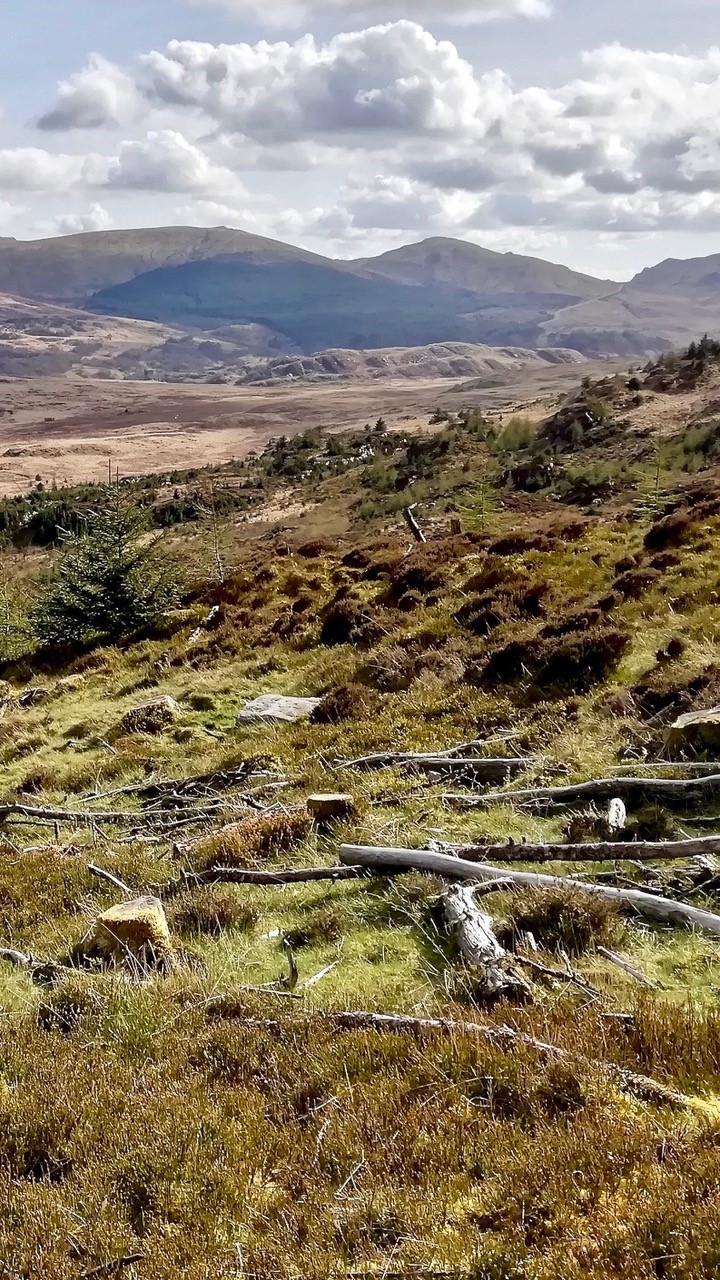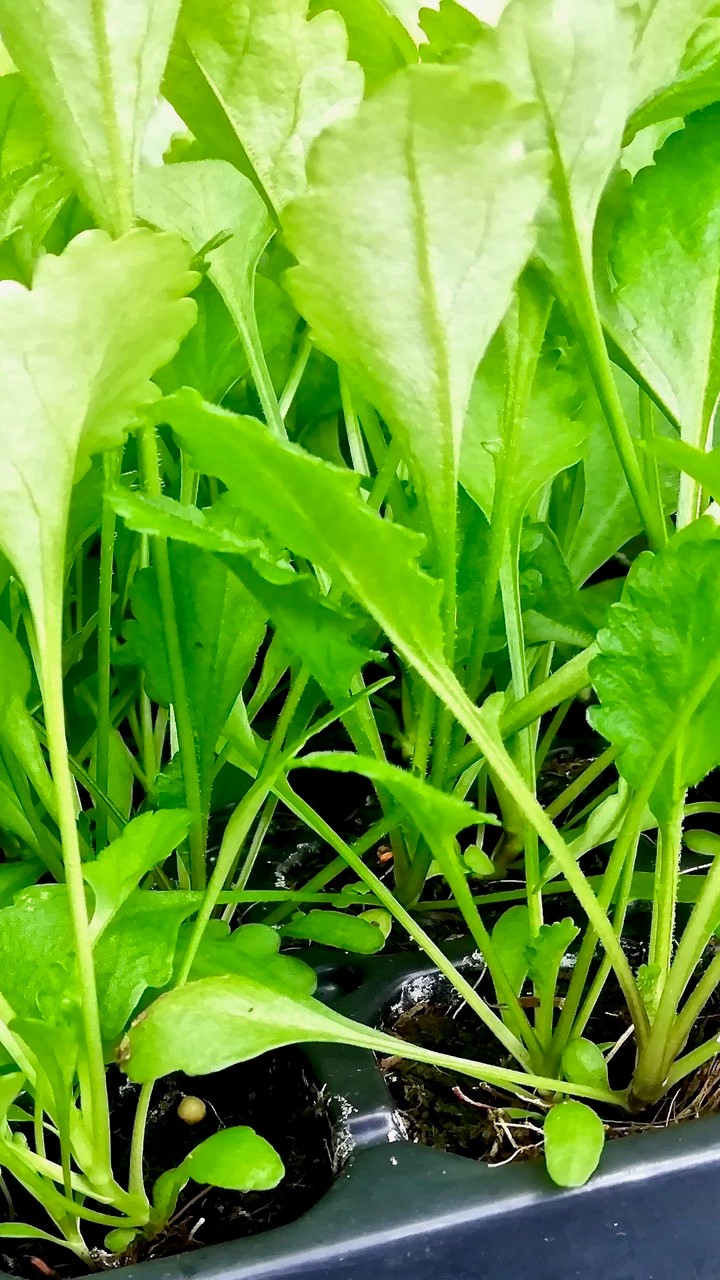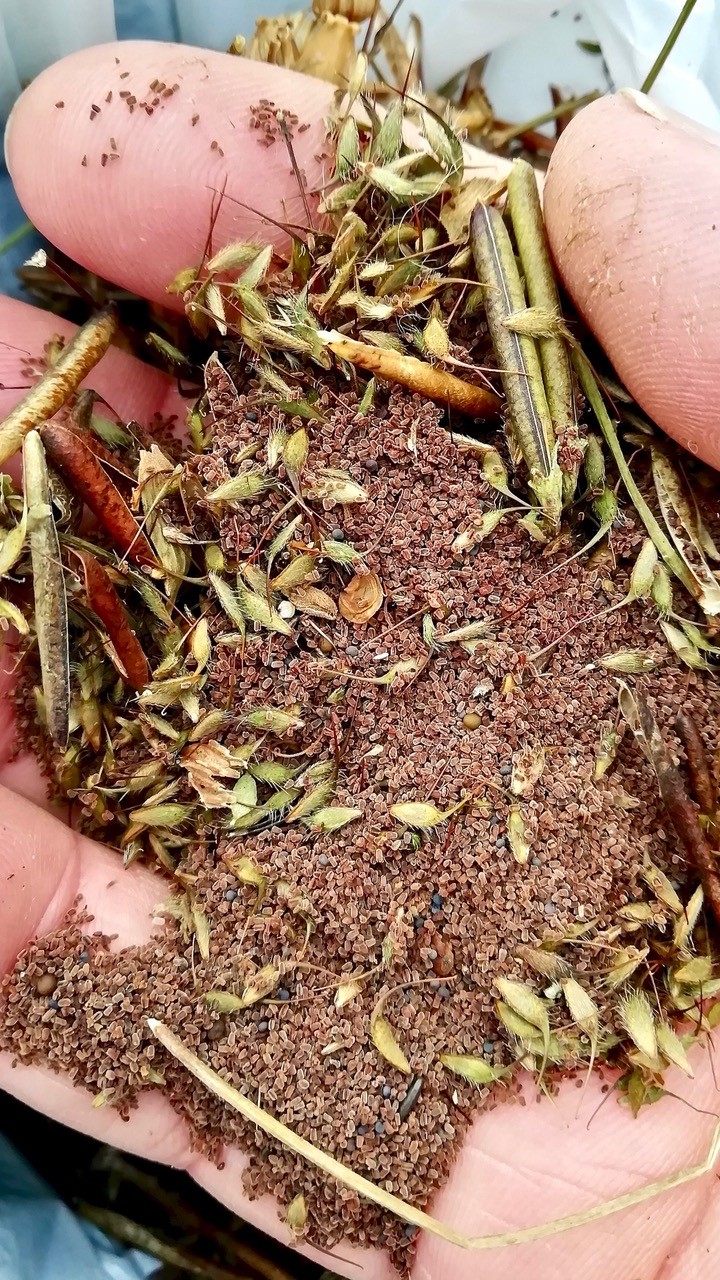Plants will salve the wounds humans have inflicted on the landscape – but a little citizen rewilding can speed the process… and sow joy.
It’s taken two decades for me to fully realise it: I’m gardening – in the foothills of Eryri in North Wales – in a land of industrial, human-made scars. A buzzard’s glide away are deep gouges into the earth, the sheer-sided scars of North Wales’ slate-quarrying past. A tiny fraction of the towering heaps of century-old slate waste have been incorporated into my evolving garden, as the beautiful blue-grey walls that prevent my garden’s terraces from slipping down the once bracken-riddled bank.
Although nature has softened, greened and blunted quarrying’s jagged wounds, these scars will never truly heal; rock has been blasted and wrenched from the earth. Apart from echoing birdsong, the nocturnal screams of foxes, and buzzing insects, these wounds now lie quiet – but will forever be deep.

Other scars run shallower across Eryri, and have huge potential to heal – if we offer them a helping, healing hand. Much of the upland landscape in North Wales has been scarred for centuries by the clearance of the ancient mixed woodlands which once made up the Celtic rainforest, followed by the mass afforestation of higher ground with ecology-stifling conifer monocultures devoid of all but the most tenacious ‘wild’ life.
Sitka spruce and western hemlock are the chief chokers of biodiversity locally. When one of these straight-sided, smothering green blocks suddenly disappears from a hill or mountainside (plantations are felled in weeks after around 40 years), you can, if you try hard enough, sense nature letting out a sigh of relief.
The scarred aftermath of conifer harvesting is truly apocalyptic; sawn-off stumps, deep ruts, piles of discarded brash. To experience our war with nature, there’s nowhere better than a just-cleared forestry plantation. The thick, evergreen canopies of conifer monocultures quash and stall ecological processes by cutting off life-giving light to plants growing below. Bar the odd native tree that can outpace the smothering blanket, only mosses, ferns and fungi subsist in the dead coniferous underworld.
But life soon bounces back. Once sunlight ousts shade, long-dormant seeds, plus any native hangers-on that have survived the darkness, seize their moment; a rare upside of the trauma experienced by soil during timber harvesting is that it gets churned up, exposing seeds slumbering beneath a thick carpet of dead needles.
I can walk to the lower slopes of my local mountain, which was once shrouded in conifer plantation. The land is now punctuated with the sun-bleached, decades-old and stubborn stumps of hemlock, larch and sitka. But although conditions are right for these scars to be healing apace, there’s another problem, one perpetually tearing at nature’s attempts to bounce back: sheep. These woolly eco-wreckers nibble on anything – bar bracken and foxgloves – mowing off any new life as soon as it appears; forever-nibbled rowans resemble little more than gnarled bonsai. Sheep pick away at this landscape in the same way we pick at scabs until they bleed, constantly holding the healing back.
A few trees do make it, including birch and willow, which gain a roothold in the boggy patches where chomping ewes fear to tread. Rowan only thrives along the steep, sheep-inaccessible banks of the river that rushes down the mountainside.
But there are other trees returning, too. Sessile oak is making a slow but steady comeback, all thanks to a friend who is growing hundreds in his garden, from seed collected from across North Wales. These are smaller, pot-grown saplings up to a foot tall. To give them a fighting chance against the woolly wreckers, they’re ‘cover-planted’, meaning that they go into spots where sheep are unlikely to find them, where the soil is half-decent: in the crooks of old toppled conifer stumps, nestled between rocks, or on steep banksides, well away from any grazer’s commuter route.

We generally construct a protective, open canopy over each sapling, primarily for camouflage. I’ve refined the art of weaving a sheep-be-gone dome of bramble stems (sturdy gloves required), which are gathered at each planting site. This works a treat (and is curiously therapeutic). No visually scarring plastic ‘tree tubes’ for us; we use what we find.
Aspen is making a comeback, too. Last spring we cover-planted dozens of bareroot suckers gleaned from within a stone’s throw of my garden. This spring I’ve got trays of aspen root cuttings sprouting with promise.
We recently yanked flail-prone alder saplings from sodden, boot-sucking ground ten minutes’ walk from the mountain, to ‘boulder-plant’ along the river: lift the boulder; lay the alder roots onto the wet, exposed soil; carefully ease the boulder back. Quick, simple, no tools required, deep satisfaction guaranteed. Every young tree is flourishing.
My friend got me hooked on giving nature a helping hand like this. We still loosely call it rewilding, but ‘re-treeing’ feels spot-on some days, and ‘reflowering’ says it all. What we’re doing is effectively speeding up the process of healing the still-painful scars left behind by commercial forestry. A nature emergency requires quiet, emergency measures.
Our efforts are off-radar; we don’t shout about what we’re doing, don’t create a social media froth, and don’t wear hi-viz waistcoats. Considered, mindful and observational, with a dash of outside-the-box thinking, are our wilding tenets, blended with our combined knowledge of ecology and growing plants. Our desire is to bring trees and flowers, and all the rich wildness that’ll come with them, back to a small patch of our local mountain. We’ve nicknamed it ‘citizen rewilding’. We don’t see a denuded landscape dotted with dead conifer stumps – we see a mountain one day covered by mixed broadleaf woodland overflowing with life. We might not actually see it, but we share that joy nonetheless.
And that’s why my greenhouse and garden have been brimful this spring, not only with cultivated plants, but with wild ones, too. A few of these will make it onto my wild banks, but most will be going mountainside. The ox-eye daisies I sowed from seed collected in my garden last summer already line the track leading to the mountain and are starting to bloom. Each plant will eventually scatter thousands of seeds – not bad for a single peat-free plug plant. Another batch of around 80 plugs are good to go. At say a modest thousand seeds per plant, that’s another 80,000 potential new plants helping to soothe forestry’s upland wounds.

Each healing ox-eye will draw countless insects of every hue, providing a feast for upland birds – including our watchful cuckoo. Last week I planted garden-reared bird’s-foot trefoil in the drier spots along the mountain path, next to the yellow rattle seedlings I sowed among the grasses one just-me-and-the-mountain autumn afternoon. Both will give wild bees a welcome boost.
Young plants of greater burdock, cow parsley, primrose, teasel and common knapweed are currently in the reflowering departure lounge. A batch of come-up-overnight coltsfoot seedlings await transfer to plug trays. Ragged robin abounds along the wet ditches on the walk up to our mountain, but not a single plant grows higher up in the soggy spots or along the rushing streams. They soon will.
We’re also sowing seeds straight into the mountain’s scars. Much of the sheep-mown terrain is covered in a thick, impenetrable mat of moorland grasses, with scant prospect of any slumbering seeds being able to break through. So we’ve taken to scraping back some test patches, to see what might be there. We’re also rolling part-rotted logs aside to expose bare soil. Pinches of dust-like Welsh poppy seeds are flicked into enticing crevices.
Late last summer I went all foxglove-crazy, collecting half a carrier bag full of seeds, starting from here in my garden, all the way to the base of the mountain. That was therapeutic enough, but then taking the path up the mountain, scattering hundreds of thousands of foxgloves in likely spots as I went, healed me and the land. It got even better. At a favourite, rainbow-making waterfall, I sat and scattered the last handfuls of seed into the rushing, adolescent river; some will be leafing up now, their purple spires booked for next spring.
I didn’t sow all the coltsfoot here. Instead, I blended it with dandelion – much to the annoyance of the seed-hungry goldfinches that have descended on the garden of late – to make a silky air-sowing mix. We took the bag of fluff up to the mountain on a sunny afternoon a few weeks ago; the warm air carried the buzzards high. We opened our helping hands, setting the coltsfoot and dandelion onto the lifting breeze, free to find their own quiet, healing place among the scars.
Text and images © John Walker.
Find John on Twitter @earthFgardener


